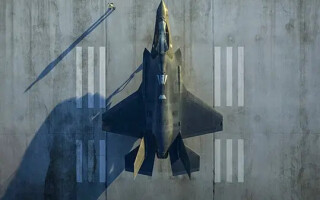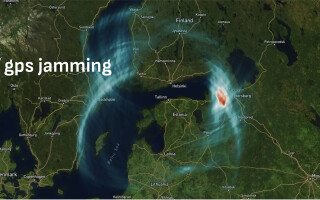Helicopters and the kill web
BlogSeptember 28, 2018
WARFARE EVOLUTION BLOG: Helicopters will have a role in the kill web as they have in the kill chain dating back to their first uses in warfare. Starting with the Korean War, and later in Vietnam, the helicopter became the cavalry. Anyone serving in the Army during the 1960s and 1970s knows about the 1st Cavalry Division (Airmobile) in Vietnam. You could hear their UH-1 Iroquois helicopters (nickname: Huey) coming from miles away. These aircraft carried troops into battle and provided fire support for ground forces in a fight.
Today, helicopters presently in service are getting long in the tooth. More than 16,000 UH-1 Hueys (UH stands for utility helicopter) have been built since 1956. Some of those were push overboard, from the deck of the USS Midway, during the evacuation of Saigon in 1975. About 4,000 UH-60 Blackhawks have been built since 1974. And, 1,180 CH-47 twin-rotor Chinooks have been built since 1962 (CH stands for cargo helicopter). The Army is still operating about 475 of those big Chinooks.
Since 1984, about 2,200 AH-64 Apache attack helicopters have been built (AH stands for attack helicopter). Nearly 40 percent of those aircraft were sold to foreign allies, and fifteen countries fly them. The Apache was originally designed as a tank killer. It carries 16 Hellfire missiles, and has an on-board 30mm chain gun for Close Air Support (CAS). Its original mission was to stop Russian tanks when they came through the Fulda Gap in Germany, to invade Europe.
Pilots have two old sayings that remain true: (1) "Airplanes want to fly. Helicopters don’t," and (2) "A helicopter is 50,000 parts flying in close formation." Overhead-rotor helicopters are the worst shock-and-vibration and contaminant environment of all the military platforms. They are hard to maintain because they beat themselves to death. So, there’s a big transition occurring. The U.S. Navy is beginning to deploy the tilt-rotor V-22 Osprey instead of traditional overhead-rotor helicopters. And, the U.S. Army is considering transitioning from the Huey, Blackhawk, Apache, and Chinook to the Bell-Textron V-280 Valor tilt-rotor. These are called Future Vertical Lift aircraft (FVL).
To read more Warfare Evolution Blogs by Ray Alderman, click here.
Nevertheless, market researchers say that worldwide, 26,238 helicopters will be built over the next 14 years (2018-2032). That number includes commercial and military aircraft. About 5,714 of that total will be medium/heavy military helicopters (>15,000 lbs). Based on unit volume, the Russians will ship about 40 percent (2,285), Sikorsky at 24 percent (1,371), China at 9 percent (514) and Boeing at 8 percent (457). Together, these four helo-makers produce about 450 military overhead-rotor aircraft per year. This rate could accelerate in the 2020’s as the Army transitions to Future Vertical Lift.
Another market report predicts that 1,600 light military helicopters (<15,000 lbs) will be sold worldwide over the next 15 years. Airbus will build 420, China’s Avicopter will build 301, Hindustan Aeronautics (India) will build 257, and Bell Helicopter will build 225. Worldwide, annual production rates will come down from 217 in 2017, to 87 units in 2024. Clearly, the market for light military helicopters is declining.
In 2017, Boeing got multi-year orders for 268 AH-64 Apaches from the US Army, with 24 going to Saudi Arabia. Also in 2017, Lockheed-Martin/Sikorsky got orders for 257 Blackhawks from Saudi Arabia. Obviously, Saudi Arabia is gearing-up to thwart Iran. Sikorsky is working on their next generation overhead-rotor helicopter now, the SB>1. In September, Boeing partnered with Leonardo (Italy) and got the order for the first four MH-139 helicopters from the US Air Force, to replace the aging UH-1 Hueys used to protect their ICBM missile silos and ferry people to and from those sites. If all goes well, the Air Force will place a multi-year order for 80 more.
It’s difficult to count all the present orders for helicopters. The Brits build an AgustaWestland version of the Apache. Fuji Heavy Industries builds a licensed version of the Apache for Japan’s military too. Additionally, there are service-specific versions to account for. The Navy’s SH/MH-60 Seahawks, the Air Force’s MH/HH-60 Pave Hawks, and the Coast Guard’s MH-60 Jayhawks are all based on the Blackhawk air frame.
The Navy is replacing their elderly fleet of C-2A Greyhound propeller planes with V-22 Osprey tilt-rotors. Greyhounds are flying buses, that move people and the mail to and from aircraft carriers offshore. More than 200 V-22s have been built since 2007. According to an older requirements document, the Navy wants 48, the Air Force wants 50, and the Marines want 380 of these aircraft. All the services have a few to play with now, but the V-280 Valor could change the demand for Ospreys in the future.
As for the Army, they want a faster helicopter than can carry more troops and equipment. The Blackhawk can carry 11 soldiers and their gear (uncomfortably), at 170 mph with a combat radius of about 368 miles. The V-280 Valor can carry 14 soldiers and their gear (more comfortably), at 322 mph with a combat radius between 575 to 921 miles. Bell-Textron is presently designing another version of the V-280 for the Army’s FARA program (Future Attack Reconnaissance Aircraft). They are loading-up the Valor with missiles and guns, to replace the role of the AH-64 Apache attack helicopters. You get the basic idea here: the V-280 will replace the Hueys, Blackhawks and Chinooks for delivering troops and supplies, and another version will replace the Apaches in fire support missions for ground troops.
However, the plan is to fly the Apaches until 2048. They were recently upgraded with Link-16 communications gear, to share targeting information with fighter planes, ships, and ground forces. Today, an F-35 can find hidden enemy tanks with its IR sensors, and feed that targeting information to an Apache. The Apache can then maneuver and fire its Hellfire missiles, neutralizing the enemy tank. That can happen in less than 10 minutes, just like General John Jumper wanted. The new FARA tilt-rotor attack aircraft won't be tested and operational until 2038, from what I have read. So, the Apache attack helicopters have been integrated into the kill web. Plan on many upgrades to the Apaches over the next 30 years, before they are retired.
At this point, you have a basic idea about the demand for traditional overhead-rotor helicopters and the coming transition to tilt-rotor Future Vertical Lift aircraft. Next time, we’ll attempt to decipher all the convoluted and confusing market information about unmanned aerial vehicles (UAVs). That’s going to be a challenge.






